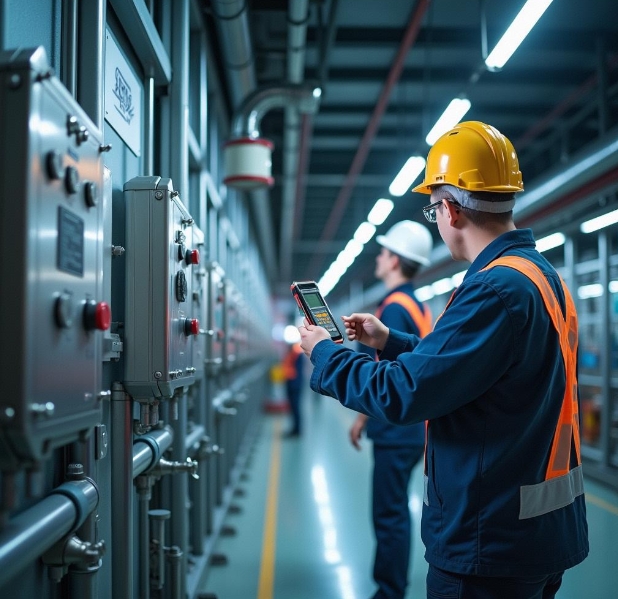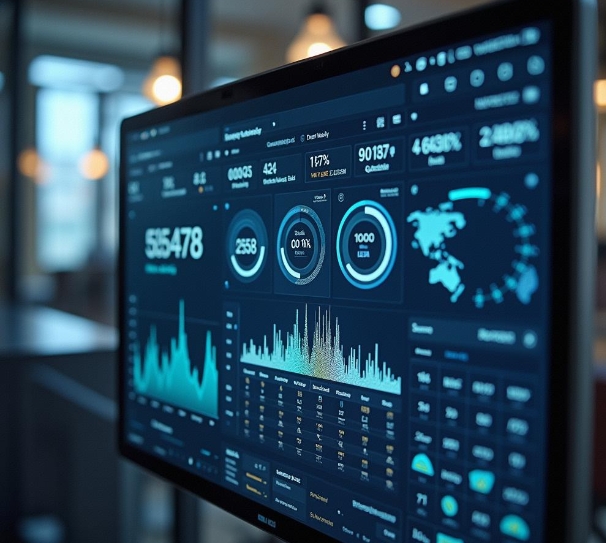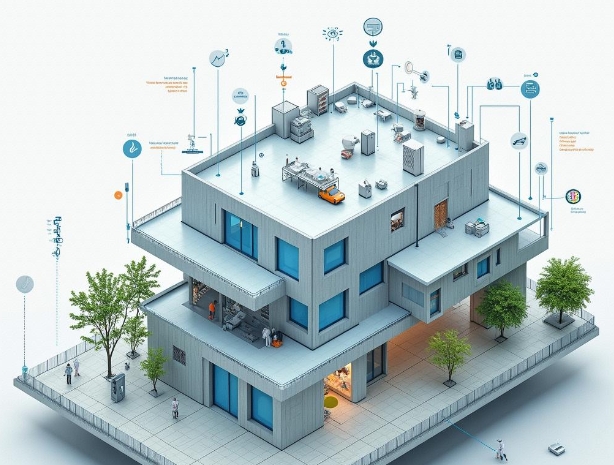Intelligent Gas Detection System: The Core of Safety Protection in the Smart Era
- latest articles
- 1.DApp Development & Customization: Merging Diverse Market Needs with User Experience 2.Analysis of the Core Technical System in DApp Project Development 3.How to achieve cross-chain interoperability in Web3 projects? 4.How does the tokenization of points reconstruct the e-commerce ecosystem? 5.How to Set and Track Data Metrics for a Points Mall? 6.What is DApp Development? Core Concepts and Technical Analysis 7.Inventory of commonly used Web3 development tools and usage tips 8.Development of a Distribution System Integrated with Social E-commerce 9.Six Key Steps for Businesses to Build a Points Mall System 10.What is DApp Development? A Comprehensive Guide from Concept to Implementation
- Popular Articles
- 1.Future Trends and Technology Predictions for APP Development in 2025 2.Analysis of the DeFi Ecosystem: How Developers Can Participate in Decentralized Finance Innovation 3.From Zero to One: How PI Mall Revolutionizes the Traditional E-commerce Model 4.DAPP Development | Best Practices for Professional Customization and Rapid Launch 5.Recommended by the Web3 developer community: the most noteworthy forums and resources 6.From Cloud Computing to Computing Power Leasing: Building a Flexible and Scalable Computing Resource Platform 7.How to Develop a Successful Douyin Mini Program: Technical Architecture and Best Practices 8.Shared Bike System APP: The Convenient Choice in the Era of Smart Travel 9.How to Create a Successful Dating App: From Needs Analysis to User Experience Design 10.From Design to Development: The Complete Process of Bringing an APP Idea to Life
In the rapidly developing era of intelligence, safety issues remain a focal point of societal concern. Particularly in various fields such as industrial production, healthcare, agriculture, and urban management, the risks of gas leaks or pollution are significant factors threatening life and property safety. Therefore, the Smart Gas Detection System, as an innovative technology integrating sensing technology, the Internet of Things, big data analysis, and artificial intelligence, is gradually becoming an indispensable core guardian of safety in the intelligent era.
I. Basic Composition and Principles of the Smart Gas Detection System
The Smart Gas Detection System is an automated system capable of real-time monitoring of gas concentration, type, and trends in the environment. Its core components include:
1. Gas Sensor Module
Gas sensors serve as the "sense of smell" of the system. Utilizing technologies such as optical, electrochemical, and thermal catalysis, gas sensors can quickly and accurately detect the concentration of specific gases. For example, optical sensors can detect carbon dioxide, while electrochemical sensors are commonly used to detect harmful gases like carbon monoxide.
2. Data Acquisition and Transmission Module
This module uploads data collected by sensors to the cloud or a local data processing center via wireless communication (such as Wi-Fi, 5G, or LoRa), enabling remote monitoring.
3. Data Analysis and Processing Platform
The platform utilizes big data and artificial intelligence algorithms to process collected data in real-time, perform anomaly analysis and predictions, thereby quickly identifying potential risks and issuing alarm signals.
4. Intelligent Control and Linked Devices
The Smart Gas Detection System is typically linked with automated control devices. For instance, when a toxic gas leak is detected, it can automatically shut down ventilation systems or activate fire suppression equipment to prevent the situation from worsening.
II. Application Scenarios of the Smart Gas Detection System
The Smart Gas Detection System has been widely applied in multiple fields, meeting the needs of different scenarios with its specificity and reliability.
1. Industrial Production
In chemical plants, smelters, and the oil and gas industry, gas leaks can lead to explosions or poisoning incidents. The Smart Gas Detection System enhances safety production levels significantly by monitoring the concentration of harmful gases, such as methane and hydrogen sulfide, in real-time and providing early warnings.

2. Healthcare and Public Health
In places like hospitals, laboratories, and pharmaceutical factories, the gas detection system can monitor the concentration of gases such as oxygen and nitric oxide to ensure the environment meets safety standards. For example, in operating rooms, the Smart Gas Detection System ensures precise control of oxygen concentration, thereby protecting the safety of medical staff and patients.
3. Urban Environmental Monitoring
The Smart Gas Detection System is also widely used in urban air pollution control. By deploying monitoring nodes throughout the city, it can track changes in pollutants like carbon dioxide and PM2.5 in real-time, providing a scientific basis for policy-making and environmental management.
4. Household and Commercial Spaces
For ordinary households and commercial buildings, the Smart Gas Detection System is primarily used to detect combustible gases like natural gas and toxic, odorless gases such as carbon monoxide, thereby ensuring the safety of the living environment. For instance, when a natural gas leak is detected, the system can sound an alarm and automatically shut off the valve.
III. Technical Advantages of the Smart Gas Detection System
Compared to traditional gas detection methods, the Smart Gas Detection System offers the following significant technical advantages:
1. Real-Time Capability and Accuracy
The high sensitivity of sensors and the efficient analysis of artificial intelligence algorithms enable the system to respond quickly when gas concentrations exceed limits, thus preventing dangers from escalating.
2. Remote Monitoring and Automation
Through IoT technology, managers can view detection data anytime and anywhere via smartphones or computers, achieving remote control over on-site conditions.
3. Interconnectivity and Scalability
The system can interconnect with other smart devices. For example, upon detecting a gas leak, it can activate ventilation systems and simultaneously send alarm notifications to relevant personnel.
4. Predictive Capability Supported by Big Data
By accumulating historical data, the Smart Gas Detection System can use machine learning algorithms to predict future risks, such as forecasting potential times when gas concentrations might exceed standards in a specific area.

IV. Challenges and Future Development of the Smart Gas Detection System
Although the Smart Gas Detection System has broad application prospects, it faces several challenges during its development:
1. Cost Issues
The high cost of high-precision gas sensors and supporting smart hardware limits their adoption by small and medium-sized enterprises. In the future, cost reduction through technological innovation and mass production is necessary.
2. Environmental Adaptability
Harsh environments (such as high temperature, high humidity, or highly corrosive conditions) impose strict requirements on the stability of gas sensors. Enhancing the durability of sensors is an important research direction.
3. Data Privacy and Security
As the system's connectivity increases, issues of data privacy and security become more prominent. It is essential to strengthen encryption technologies and network security measures to prevent sensitive data leaks or malicious tampering.
4. Integration into Multiple Scenarios
In the future, the Smart Gas Detection System needs to achieve integrated applications in more scenarios. For example, in smart buildings, smart agriculture, and autonomous driving, gas detection will become one of the important sensing modules.

V. Summary and Outlook
As a core guardian of safety in the intelligent era, the Smart Gas Detection System not only provides reliable safety guarantees for industrial production and urban management but also enhances the comfort and health levels of public and living environments. With continuous technological advancements, the system's costs will further decrease, and its applicability and popularity will continue to rise.
In the future, the application of the Smart Gas Detection System will become even more widespread and deeply integrated into areas such as smart cities, smart homes, and Industry 4.0. It is not only a result of technological innovation but also a symbol of humanity's pursuit of safety, health, and sustainable development.
-

How to Use App Development to Boost Conversion Rates on E-commerce Platforms
With the widespread adoption of smartphones and the rapid development of mobile ···
-

How APP Development Facilitates Digital Transformation and Innovation
With the rapid advancement of information technology, digital transformation has···
-

App Store Optimization and SEO Strategies in App Development
In today's rapidly evolving mobile internet landscape, apps have become essentia···

 Blockchain
Blockchain










